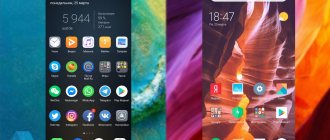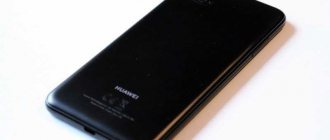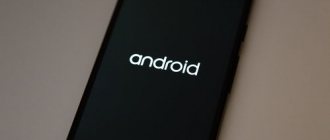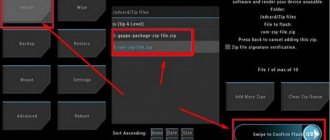At the end of last year, Huawei, together with the flagship Mate 20 Pro, introduced a new shell, which is based on the Android 9 operating system. Traditionally for the company, it was called EMUI and a serial number that corresponds to the Android version - 9.0. What's new in EMUI 9.0 and what the company focused on when developing it, I will tell you in this article.
Focus on speed
According to Ryan Lui, marketing manager for EMUI, in shell versions 8.0 and 8.1 the company focused on using machine learning in applications and the camera, in 8.2 support for GPU Turbo technology appeared, but in 9.0 all the attention of the developers was paid to the speed of the interface. and launching programs.
According to Huawei Lab, system responsiveness with EMUI 9.0 has increased by an average of 47% compared to version 8.2, and application launch has accelerated by 51%. However, the company does not disclose on which devices and under what conditions the testing was carried out, so these claims are difficult to prove or disprove.
But purely subjectively, the interface with EMUI 9.0 has really become faster. And we’re not just talking about the flagship Mate 20 Pro, which received faster hardware, I used the new shell on the Huawei P20 Pro, released early last year, and it’s clear that the interface has accelerated. Animations in it have become smoother, especially when scrolling through long lists or galleries, applications launch and collapse faster. In this regard, EMUI 9.0 has really improved, at least on the P20 Pro, although I hope that the difference will be noticeable on less expensive Huawei devices.
Huawei announced EMUI 9.0 on Android Pie: find out what's new here
— Advertisement —
At the 58th International Consumer Electronics Fair IFA 2021 in Berlin, Huawei announced EMUI 9.0. The new interface will be available on Huawei Mate 20 in October, and it is based on the recently released Android 9.0 Pie OS.
Huangei Software Development President Wang Chenglu announced the new interface at a press briefing. In developing EMUI 9.0, Huawei adhered to three principles: simplicity, consistency and enjoyment.
Anyone who has ever used EMUI knows that the interface of this shell is overloaded. Why did Huawei decide to reduce the number of elements to 843 in EMUI 9.0? Let me remind you that in EMUI 8.0 there are 940 of them. Here I would like to note that in Samsung’s UX there are more than 1000 lines in the menu.
Take a look at some screenshots of the new EMUI 9.0 interface:
There are small additions designed to improve usability, such as bookmarks that move a menu item down instead of up. This will make it easier to use long phones - which is very important, since devices with 18:9 and 19:9 screens are becoming popular.
Huawei has also made operating your smartphone even more convenient, thanks to navigation using new gestures. They will be present throughout the user interface. To allow users to "quickly navigate, multitask, and activate an AI assistant."
The EMUI 9.0 interface will run more smoothly, and application launch times will decrease. Chenglu noted an increase in system battery life by 12.9%, and Instagram loading times decreased by 12%.
At the conference, Huawei also highlighted GPU Turbo 2.0 technology, which was recently announced to optimize gaming performance. It looks like it will be released alongside EMUI 9.0. Initially, four games will receive support: Vainglory, Arena of Valor, Rules of Survival and NBA 2K18. Some of these games are on my list of the best Android games 2021.
Huawei has also added a new password manager that can encrypt and automatically fill passwords when you scan your face or fingerprint.
Huawei released the EMUI 9.0 beta yesterday for the Mate 10, Mate 10 Pro, P20 and P20 Pro, as well as Honor 10, Honor View 10 and Honor Play. You can download and get detailed information on consumer.huawei.com, but I have not yet been able to install EMUI 9 on the phones listed above. The Chinese manufacturer should release a stable version in the coming months.
Conclusion
Of course, there's still a lot we don't know about EMUI 9.0, but I'm sure there will be more looks at the new interface in the coming weeks. What do you think about this update? Write your impressions in the comments below! Thanks everyone and good luck!
Gesture control
Even though Android 9.0 introduced a new gesture navigation system, Huawei decided not to use it and instead developed its own. When I asked about this, Ryan Lui noted that the company decided to try to make navigation with gestures more convenient, regardless of which hand the user is holding the smartphone with.
As a result, the new navigation mode includes two simple gestures. The first is a swipe from the bottom of the screen, which returns you to the desktop, and if you hold your finger a little, it opens the multitasking menu. And the second is a swipe from the right or left edge of the display, which takes you back a step, and it doesn’t matter which part of the screen you pull from its edge, it works along the entire height on the sides, which is convenient.
In general, gesture navigation according to Huawei works well, it is simple and does not require a lot of getting used to.
At the same time, the ability to switch to traditional virtual keys at the bottom of the display is not lost, as is the ability to assign gestures to the fingerprint scanner in models such as the P20 and P20 Pro.
Huawei demonstrated the capabilities of EMUI 9.0
The time has come, and Huawei introduced a new version of its operating system, which received the ninth serial number. It is built on Android 9.0 Pie and boasts a lot of innovations. We attended an event dedicated to EMUI 9.0 and are ready to tell you everything about it.
The event took place in Moscow in one of the halls of the Baltschug Kempinski hotel. During the presentation, company representatives not only told what changes await the new OS, but also showed them in action. At the same time, Huawei became the first company to show its own OS based on Android 9.0 Pie.
The update can already be installed in some countries around the world on the flagship smartphones Huawei P20, Huawei P20 Pro, Huawei Mate 10 and Huawei Mate 10 Pro. In Russia, it will be possible to install the update from mid-December of this year, that is, literally from day to day.
The main advantages of the operating system compared to competing solutions include higher performance, greater reliability and extended service life.
Thanks to this, applications will launch faster, and overall system performance will increase by 12.9 percent. For even greater comfort of use, the system uses sounds and design elements inspired by nature itself. Thus, this will allow the already fast system to perform even better, making competitors nervous.
An additional contribution to performance will be made by support for GPU Turbo 2.0, which copes well with all graphics tasks and provides a smoother interface, while reducing the load on the battery.
As Huawei itself states, the new operating system was created under the motto “Include quality of life.” The main external changes are related to the minimization of unnecessary menu items and, often, unnecessary settings, reducing their number by more than 10 percent, without harming functionality.
A number of management bodies have also undergone changes. For example, the control panel will now be easier to use with one hand, and important visual elements are positioned to be more informative and reduce eye strain.
EMUI 9.0 also introduced the ability to conveniently connect to other devices. Now you can send a document for printing literally in one click, and when connected to a TV, you can choose between displaying a mirror “screen” or a full-fledged analogue of a desktop desktop. In this case, the smartphone will act as a trackpad, making control much more convenient.
If you're worried about using your smartphone for too long, or want to limit the amount of time your child spends playing games, Digital Balance can help you by tracking all user activity. If necessary, it can not only provide a report on the use of the smartphone, but also allow you to block some applications to limit access to them after a certain time.
For greater convenience in working with passwords, EMUI 9.0 provides a built-in password storage. All saved recordings are stored in the smartphone’s memory and do not leave it. They can be used to conveniently and securely autofill passwords on websites.
We worked in a new operating system and with artificial intelligence, adding capabilities to it. Now he can qualitatively analyze objects caught in the frame, search for them in online stores and offer to buy them. Now you don’t have to search long for your favorite sneakers or chair to buy the same one for yourself.
You can discuss this and other Android news in our Telegram chat.
Menu at the bottom of the screen
Manufacturers' desire to make smartphone screens larger with each new generation is interfering with users' difficulties in using them. And gradually, interface developers come to the conclusion that all menus should be located at the bottom of the display, so as not to force the user to reach up to them with his fingers.
EMUI 9.0 was no exception in this regard; in most system applications, all menus were moved to the bottom of the screen. This makes using your smartphone more comfortable.
EMUI 9.0 based on Android Pie 9.0 will be available for Huawei P20 and P20 Pro
In the near future, an updated version of the proprietary user interface EMUI 9.0 for the HUAWEI P20 and HUAWEI P20 Pro smartphones will become available to Russian users. The update will start in mid-December this year.
The interface is based on Android 9.0 Pie OS. It improves overall performance by 12.9% and ensures faster application launch times. EMUI 9.0 comes with the second generation of GPU Turbo 2.0 technology, which significantly speeds up the processing of graphics tasks through intelligent analysis, delivering improved performance and reduced power consumption. The new algorithm improves touch screen sensitivity parameters and reduces response time by 36%. The App Assistant app helps you set up notifications so that your gaming sessions are not interrupted.
To create the most comfortable interface, Huawei engineers have reduced the settings menu items by 10%, combining a number of sections and moving rarely used items to a separate tab, which has significantly increased the convenience of managing the smartphone. The navigation bar has been moved to the bottom of the screen to make it more convenient to operate the smartphone with one hand. Additionally, EMUI 9.0 repositions important visual elements to reduce eye strain.
EMUI 9.0 provides greater data security with built-in password storage, which allows users to securely store identities and credentials for various applications and services. All data is encrypted and does not leave the internal memory of the smartphone, allowing you to use the autofill function without the risk of leaking personal information.
The updated interface has the ability to connect a smartphone to a TV or monitor wirelessly. Users can display images on large screens for presentations, photos, videos, and even video games.
EMUI 9.0 also supports wireless printing of documents via Huawei Share. The function allows you to print documents directly from your smartphone with just one click, eliminating the need to copy and send files.
The Digital Balance control panel analyzes personal smartphone usage activity and provides statistics on the time spent using each application, the frequency of screen unlocking, and a breakdown by period. Using this data, users can set limits and adjust the time spent using each application.
Wind Down mode provides a comfortable preparation for bed, allowing you to configure a gradual decrease in the brightness of the display and its transition to monochrome mode with muting notification sounds for a certain time.
We were already familiar with EMUI 9.0 thanks to the Huawei Mate 20 Pro smartphone, but Ryan Lui, assistant vice president of software marketing at Huawei Consumer Business Group, recently visited Russia. During a large master class, Ryan showed the new OS from Huawei and showed its distinctive features. He also answered questions from journalists. In particular, we learned that Huawei has no plans to create its own operating system as an alternative to Google Android. In any case, he confirmed that he did not see this in the company’s route map.
Ryan Lui also said that Huawei has no plans to participate in Project Trebble so that users can install bare Android themselves. According to Ryan Louis, the user interface from Huawei is as convenient and user-friendly as possible, and the company’s developments contribute to the Android OS, so in his opinion it makes no sense to make a smartphone with “naked” Android on board.
New multitasking mode
In Android 9.0, the multitasking menu is displayed with cards of open applications that you can swipe to the right or left. This is both convenient and visual, so Huawei decided not to change it, but added the ability to switch to the mode of using two programs in one window.
Also from this menu you can make sure that the application is never unloaded from RAM and always remains in the background; to do this, just pull its card down.
Simplified settings
Another task that, according to Ryan Lui, Huawei set for itself was to make the smartphone settings simpler and more convenient to use.
To do this, the main functions were brought to the first screen, and less popular ones were hidden in the following menu items. In general, compared to EMUI 8.0, in the ninth version of the interface the number of settings menu items has been reduced by almost 10% from 940 to 843.
Digital balance
In Android 9, Google introduced the “Digital Balance” feature, which allows you to manage the time you use your smartphone and generally see how much time is spent on different applications. This feature is optional for Android 9, but they decided to include it in EMUI 9.0.
“Digital Balance” itself should help the user spend less time with the smartphone, as well as go to bed on time. For the former, this feature allows you to limit the time that the user can spend using the smartphone or in certain applications. And for the second, in a given period of time, for example, from 23:00 to 7:00, the image on the smartphone screen will become monochrome, which should prompt the user to put it aside and go to sleep.
In addition, the statistics collected by Digital Balance allow you to analyze how much time is spent on a particular application and change your habits. But for this you will have to use your own willpower; a smartphone will not help with this, because “Digital Balance” needs to be turned on and configured yourself.
In addition to all this, this function also allows you to manage the time that the child spends on a smartphone or in applications.
Key features of EMUI 9.0
Content
In 2021, Huawei OpenLab was established in Beijing, which promotes cooperation with partners and developers. The laboratory's activities are based on several main principles and goals, such as: joint development and testing, increasing the competitiveness of products.
It was thanks to OpenLab that Huawei had the opportunity to test Google's new Android P platform three months earlier than other Chinese smartphone manufacturers. As a result, Huawei became the first company in China to publish an Android P compatibility report, which allowed app developers to begin working on adapting their products to the new version of the OS.
Simple and natural interaction with the device
EMUI 9.0 received a completely new set of ringtones, which included sounds of nature. From the murmur of water to the chirping of birds, natural and voluminous sounds create an atmosphere of calm and tranquility.
Smart Color Picker
EMUI 9.0 uses Huawei's Smart Color Picker technology to seamlessly combine shades using natural colors in the default profile design. Auto color picker technology is used to increase the contrast and brightness of various interface elements, as well as to improve text readability, which made it possible to create a holistic and comfortable smartphone interface space.
Vivid illustrations of functions
To more clearly present the various functions within the interface to the user and clearly explain their meaning, EMUI 9.0 provides illustrations that make it easy to understand the purpose of each function.
Briefly about the settings menu
Simpler is better : the settings menu in EMUI 9.0 has become simpler and more user-friendly. About 10% of the main menu items have been removed or moved to the “Advanced Settings” tab. In addition, several changes have been made to make features easier to access. For example, instead of several separate options allowing you to activate GPS, WLAN and base station positioning, EMUI 9.0 asks permission for all these functions at the same time.
Unification : EMUI 9.0 has re-sorted some settings, making them easier and faster to access. For example, wallpaper, lock screen, themes and other design settings, which occupied eight submenus in EMUI 8.0, have been combined into a single menu.
Friendly interface : The new OS from Huawei based on Android P has become even more user-friendly. For example, the “Clock” application: now one “tap” on the screen is enough to change the digital clock to an analog clock and back.
A universal design language
To create a sense of cohesion and visual unity, Huawei designers used the same design language for most elements of EMUI 9.0.
EMUI 9.0 puts all of your frequently used features and apps, such as Email, Contacts, Calendar and Notes, in the center of the bottom half of the screen, making them easy to touch with your thumb when operating your smartphone with one hand. . Thanks to these changes, operating your smartphone has become more logical, and searching for functions and learning the interface takes less time.
Ergonomic design
When developing EMUI 9.0, we also took into account ergonomic features. The navigation bar has moved from the top of the screen to the bottom, where it is easy to reach when operating the smartphone with one hand.
Animation effects in the EMUI 9.0 interface have been accelerated, visual elements have become more comfortable for the eye and do not tire the user’s eyes.
Gesture control
EMUI 9.0 features a completely new gesture control system that maximizes the use of screen space while minimizing the time users spend exploring their devices.
Safety
Complete protection of user data and personal information
Data Protection: A new feature introduced in EMUI 9.0 is a secure local password store that stores user login data in encrypted form. Users do not have to worry about passwords being intercepted by attackers while being transferred to external storage.
Digital Wellbeing
EMUI 9.0 OS received a Digital Wellbeing solution, which is designed to help users better understand how much time they spend with their smartphones and with each specific application. Based on this information, users can manage their habits, limiting access to certain applications for themselves and their children.
Restful sleep
The user can set the sleep time, for example, from 22:00 to 7:00. During this period, the smartphone will automatically turn on a monochrome color scheme so as to attract less attention and not distract from getting ready for bed.
Similar
New backup option
Data backup capabilities in EMUI 9.0 have expanded slightly. Now, in addition to an external USB drive, backups can also be made to network storage (NAS).
Object Scanner
EMUI 9.0 introduces a new machine learning-based HiVision feature that can be used directly from the camera interface. What is it?
HiVision is an image and object scanner and includes several functions at once: scanning QR codes, real-time translation, searching in online photo stores (Ukrainian ones are not yet supported), as well as identifying objects when pointing a camera at them, for example paintings by famous artists.











